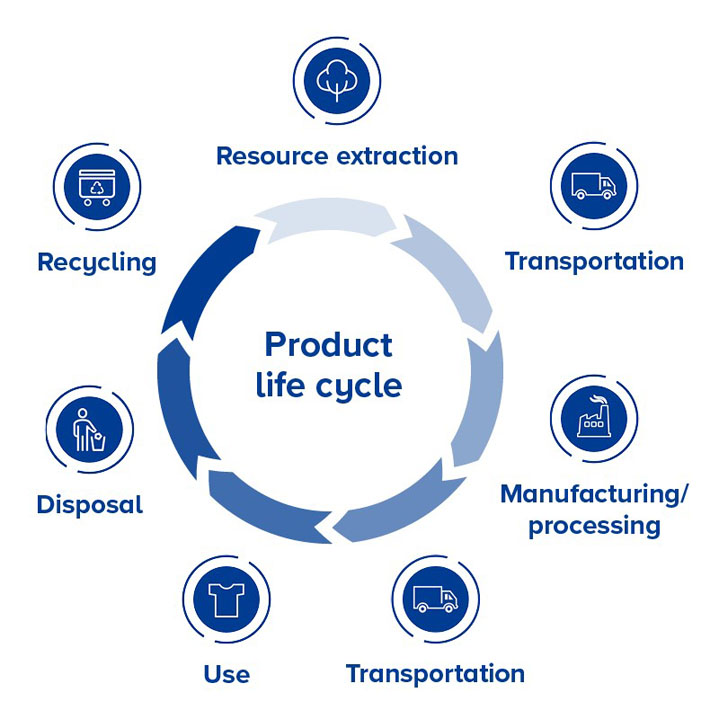Life cycle assessment (LCA)
What is a life cycle assessment?
A life cycle assessment (LCA) is the framework used to assess a product’s environmental impact. Now an internationally recognized tool, an LCA tracks both the upstream and downstream consequences of goods and services by measuring the greenhouse gas (GHG) emissions produced and resources consumed.
LCA was first implemented in 2006 by the International Organization for Standardization as ISO 14044. Also referred to as a life cycle analysis, an LCA tracks and analyses the different steps of a product’s manufacturing process to provide companies better opportunities at spotting energy-intensive stages as well as how they can reach net zero emissions.
Life cycle assessment steps
Defined by the ISO, an LCA involves four steps: goal setting, data collection, impact assessment, and interpretation/implementation of results.
It’s important for a company to state the goal of their LCA. Are they looking for more sustainable options, like reducing their corporate carbon footprint? Next is to collect all relevant information as defined by the GHG Protocol regarding carbon emissions in a product’s value chain.
An impact assessment is then done after all the information is documented in a Life Cycle Inventory (LCI), which considers three areas of protection: human health, natural environment, and matters related to natural resource use. And finally, impact categories such as climate change, land use, and resource depletion are created using the emissions and resources derived from the LCI.
Interpreting these results for accuracy and recommendations provides companies with accurate models regarding their approach to decarbonisation.
Benefits of a life cycle assessment
Companies prioritising sustainability for their goods and services will benefit the most from an LCA. This includes:
- Identifying and reducing areas with the most negative impact on the environment
- Making well informed decisions towards more sustainable development
- Committing to transparent sustainability measures for the benefit of both consumers and producers
- Complying with regulations like the Corporate Sustainability Reporting Directive (CSRD) and Green Claims Directive
- Knowing how to plan for a more sustainable future
Product life cycle assessment stages
There are several product life cycle stages according to a company’s environmental, social, and governance (ESG) strategy. The full cycle analysis, known as the cradle-to-grave approach, measures a product carbon footprint starting from the material extracted from the environment, going through the manufacturing process, and ending when the owner disposes of the product.

LCA outcomes vary greatly according to the cycle chosen. For instance, the emissions of an electric vehicle will be higher than a gas-powered vehicle in a cradle-to-gate (ending at the manufacturing site) approach, but not cradle-to-grave.
It is therefore important to clearly define the LCA strategy for your business. Learn more about how to calculate your product carbon footprint and decarbonise your supply chain with the ClimatePartner academy.